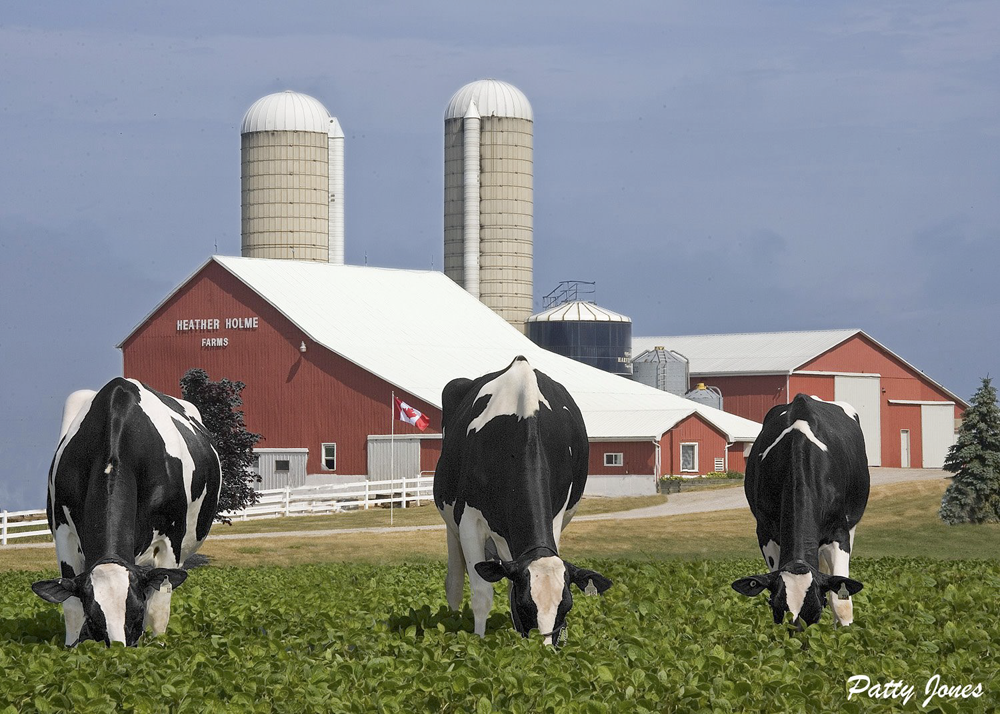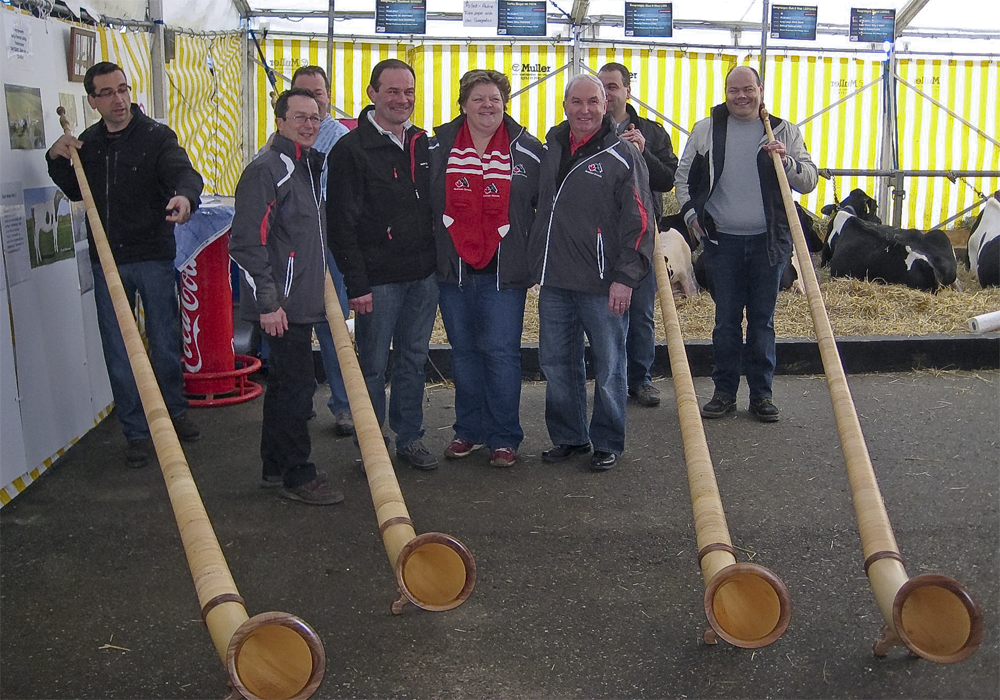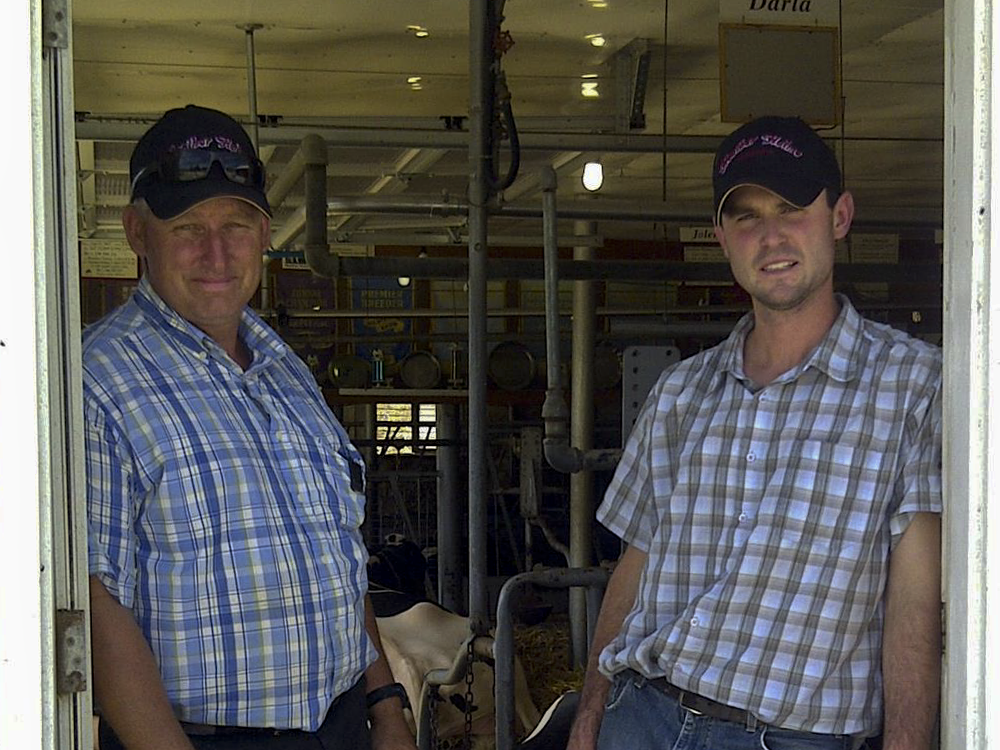Ready for the impact of the U.S. election on the USMCA? Discover the potential changes for Canadian and Mexican dairy farmers.
Summary:
Hold onto your hats, folks! The looming U.S. election could throw a wrench into the current state of the U.S.-Mexico-Canada Agreement (USMCA). Both Kamala Harris and Donald Trump have made it clear—renegotiation is on the table. With North America’s trade landscape in their hands, what changes might be in store for Canada’s and Mexico’s interconnected economies? The stakes are sky-high. Canada, with 80% of its exports heading south, is all-in on maintaining its substantial $900 billion trade relationship. Meanwhile, Mexico has its gaze set on shielding its vital vehicle-manufacturing sector while also aligning with U.S. expectations regarding Chinese imports. The U.S.-Mexico-Canada Agreement is a significant trade deal that has been criticized for its imbalances in economic benefits and labor regulations. Are Canadian and Mexican dairy industries ready to adapt to potential shifts? The debate revolves around dairy market access and tariffs, with two scenarios emerging: reduced tariffs to flood markets with domestic products or tariffs to secure American interests but pose challenges for Mexican businesses relying on U.S. imports. Canada’s economy is at a critical point, while Mexico’s dairy sector faces challenges in balancing U.S. demands and safeguarding its interests.
Key Takeaways:
- The USMCA renegotiation could reshape the North American dairy market dynamics, affecting supply chains and economic stability in Canada and Mexico.
- Canada’s essential export relationship with the U.S., particularly in the dairy sector, faces uncertainty, triggering lobbying efforts to safeguard trade agreements.
- Mexico’s vehicle-manufacturing industry and dairy trade are pivotal points of concern amid U.S. demands regarding Chinese imports.
- The potential renegotiation reflects broader economic strategies by both Kamala Harris and Donald Trump, impacting industries and bilateral relationships.
- Stakeholders in the dairy sector should brace for potential shifts in market access and regulatory practices due to changes in digital trade and anticorruption regulations.
- Regardless of the election outcome, the USMCA’s renegotiation underscores the ongoing evolution of North American economic ties and their global implications.

Have you ever considered how a change in U.S. trade policy might ripple across your dairy farm’s operations? As the U.S. gears up for an election full of contentious debates, the future of the U.S.-Mexico-Canada Agreement (USMCA) hangs in the balance. Kamala Harris and Donald Trump are eyeing renegotiations that could unsettle existing trade relationships. But what does this mean for your dairy business? Let’s find out.
“Renegotiating USMCA could potentially reshape entire industries, with dairy being one of the most vulnerable.” — Wall Street Journal.
As candidates vocalize their plans, Canada, which exports 80% of its goods to its southern neighbor and Mexico, is on high alert. And with billions of dollars and livelihoods at stake, the tension is palpable. Stay with us as we unpack how these political maneuvers could impact you and your business.
USMCA: The Dynamic Force Reshaping North American Trade and Its Dairy Implications
The United States-Mexico-Canada Agreement (USMCA) is more than just a trade pact; it’s a dynamic force shaping the economic landscape of North America. Born from renegotiating the North American Free Trade Agreement (NAFTA) in 2020, the USMCA was designed to address modern trade issues and boost economic ties among its member countries. Consider it an overhaul to lay the firmer ground for trade between the U.S., Canada, and Mexico. Critical changes honed in on labor laws, environmental protections, and digital trade, which reflect international commerce’s evolving priorities.
Discuss why this agreement is crucial for the dairy industry, particularly in Canada and Mexico. Under the USMCA, the Canadian dairy market was partially opened to U.S. imports, permitting American dairy farmers greater access to Canadian consumers. This measure promised a bigger pie for U.S. dairy producers while allowing Canadian consumers the liberty of choice with varied pricing options. Mexico, already a significant importer of U.S. dairy products, managed to secure a stable trade lane, ensuring its milk-derived product supplies remain uninterrupted.
But here’s where things get sticky. Given the current political climate, The trading ecosystem is again teetering at the edge. With another U.S. presidential election at hand, both Kamala Harris and Donald Trump have expressed intentions to renegotiate this pivotal deal. Their intentions focus on addressing perceived imbalances in economic benefits and labor regulations. What does that mean for dairy farmers? Uncertainty isn’t just a shadow over crops; it’s looming over cross-border agreements.
As Trump wraps up speeches that rally around “fair deals” and Harris emphasizes labor and environmental reforms, it seems inevitable that the USMCA will face potential upheaval. The question is, are the Canadian and Mexican dairy industries prepared to adjust to new rules of engagement? As the political tides shift, the North American dairy sector eagerly awaits.
USMCA: Shifts on the Horizon for North American Dairy Markets?
The United States-Mexico-Canada Agreement (USMCA) is poised for change as political winds shift in Washington. Kamala Harris and Donald Trump have joined the fray and are targeting this pivotal trade pact. But let’s narrow our focus to the dairy industry: What changes are brewing?
The brouhaha centers around dairy market access and tariffs. Imagine, momentarily, the impact of amending the USMCA’s dairy clauses. Canada, with its vast dairy farms, and Mexico, which relies heavily on U.S. imports, must brace for turbulence.
Two scenarios emerge under renegotiation. Either party could push for reduced tariffs to flood markets with domestic products. Visions of overflowing milk quotas or cheese stockpiles might give Canadian farmers pause. How will their business plans adapt? Could increased competition from the U.S. drive innovation or breed resentment?
Conversely, introducing tariffs may secure American interests but spell trouble for Mexican businesses relying on U.S. imports. Picture production lines halting or, worse, shuttering. What’s the ripple effect on the local economy, and how will farmers navigate these uncertain waters?
Should Harris take the lead, expect diplomatic nuance, potentially emphasizing sustainability alongside trade. On the other hand, a Trump administration might prioritize aggressive deals that promise quick returns stateside.
In essence, dairy farmers and related businesses in Canada and Mexico must stay vigilant and prepped for any curveballs this political joust throws their way. Where will your allegiances lie, and how will you respond?
Canada’s Trade Tapestry: Will the USMCA Renegotiation Untangle the Dairy Sector?
Canada’s economy, a vast and intricate tapestry woven around its trading ties with the U.S., stands at a pivotal moment. Over 80% of Canadian exports wend southward, shaping a critical artery for economic vitality. Therefore, the U.S.-Mexico-Canada Agreement (USMCA) is not merely a deal—it’s a lifeline. But with the calls for renegotiation hanging in the air like a looming storm, Canada has every reason to brace itself.
Now, let’s talk dairy—the buttery core of Canada’s trade concerns. For Canadian dairy farmers and stakeholders like you, the threat of renegotiation is more than a dot on the distant horizon. It’s the real and present thrum in the agricultural pulse. Under the current USMCA terms, Canada faced the daunting reality of granting U.S. dairy producers greater market access. The fear now? This access might expand further under new talks. Yes, that’s something to chew on.
Canada needs to take this down. Ottawa has ramped up its lobbying efforts, sending envoys well-versed in trade and economics to Washington, D.C. Their message is clear: Preserve the $900 billion trade relationship. But it’s not just about trade value—it’s about the Canadian dairy sector’s survival and competitiveness on the global stage.
Imagine the ripple effect on local dairy farms should renegotiations lead to an avalanche of U.S. dairy products pouring into the Canadian market. Canadian farmers could find themselves grappling with a more saturated market, which could lead to potential shifts in pricing and market stability. For those in the dairy business, this could mean revisiting plans, reassessing market strategies, and, more crucially, re-evaluating how to safeguard their livelihoods.
So, Canada is watching closely as the winds of political change sweep across North America. The question is: In this game of negotiation chess, will Canada be able to protect its dairy sector’s interests against a potential checkmate?
Mexico’s Crossroad: Dairy Dynamics and the USMCA Renegotiation Challenge
As we zero in on Mexico’s perspective, the stakes are high with the imminent renegotiation of the USMCA. Mexico has always held a strategic position within the North American supply chain, primarily through its robust vehicle-manufacturing industry. But its dairy sector deserves attention, too. Consider how closely these industries are tied to your dairy professional or farmer’s livelihood.
First, let’s examine the cornerstone—the vehicle-manufacturing industry. This industry isn’t just a pillar; it’s a skyscraper in Mexico’s economic landscape. With numerous manufacturing plants across the country, it’s a heavyweight exporter to the U.S. Changes in trade terms could disrupt supply chains, increase costs, and threaten Mexico’s economic growth. But here’s where things get trickier. Consider U.S. demands on Chinese imports. How does Mexico strike a balance without jeopardizing its economic interests?
Now, onto the dairy sector. Mexican dairy farmers have steadily expanded their production capabilities and market reach. But look out! Changes to the USMCA could impact how fluid dairy products flow across borders. Mexican dairy farmers might see altered competitive dynamics with potential tariffs or regulatory hurdles. Will they need to adjust pricing or seek alternative markets? It’s a daunting thought, especially for those small-scale farmers who rely on consistent trade conditions.
Balancing the U.S. demands while safeguarding its interests is a challenge for Mexico. The crux of this renegotiation could push Mexican policymakers to weigh vehicle manufacturing privileges against potential concessions in other sectors, like dairy. What are your thoughts as someone directly or indirectly affected by these economic tremors? Please share your opinion, and let’s get this conversation rolling!
USMCA on the Edge: What Could a Renegotiation Mean for the U.S. Dairy Sector?
The U.S.-Mexico-Canada Agreement, commonly known as the USMCA, is a linchpin for North American trade—and it might be up for a shakeup. On the American side, the potential renegotiation of this pivotal trade deal is stirring quite the pot. As voters cast their ballots in an election that could redefine Washington’s positions, both Kamala Harris and Donald Trump have their sights set on renegotiation. But what does this mean for the U.S. dairy industry, already facing its challenges?
First, let’s dive into the heart of the matter. Trade principles in the American playbook have always championed fair and reciprocal trade. However, the execution often varies between administrations. A Trump-led negotiation might emphasize reducing trade deficits, increasing market access for American products, and, let’s not forget, a hard line on Chinese imports, a shared concern for Mexico, too. In contrast, a Harris administration would likely push for policies that balance trade with broader economic and environmental goals.
For American dairy farmers, these divergent approaches translate to different opportunities and obstacles. A more protectionist stance may shield them from competitive challenges abroad, possibly securing stronger footholds within Canada and Mexico’s lucrative markets. But does erecting barriers align with the core American trade principle of promoting open markets?
Moreover, dairy farmers must weigh the pros and cons of renegotiation. On one side, they could gain from policies that deliver more consistent access to North America’s vast dairy market. On the other, they may wrestle with restrictions that might emerge from any renegotiated pact. How might these outcomes affect your operations, and are you prepared for the shifts that could be on the horizon?
The overarching question for American dairy stakeholders remains—do these proposed changes sit well with the free-market ethos that the U.S. has championed for decades? Or do they lean towards a more insular approach that might bite back against agricultural exports down the line?
The Bottom Line
The USMCA stands on the precipice of change, with the American political scene and the economic stances of Canada and Mexico in flux. The renegotiation talks from Harris and Trump are raising eyebrows for good reason. For Canadian and Mexican dairy farmers, there’s more than just milk at stake; their livelihoods, shaped by the web of North American trade, hang in the balance. The uncertainty is palpable. Will their sectors thrive, or are there challenging roads ahead?
This is the moment to stay vigilant, informed, and prepared. Understanding these shifts can empower you to make strategic decisions for your business. Change breeds opportunity—if you’re ready to seize it.
We want to hear from you. What do you think about the potential changes to the USMCA? How do you see them affecting your operations? Please share your insights by commenting below, and let’s start the conversation. Your experiences and opinions matter not just to us but also to your fellow industry professionals.
Learn more:
- North American Dairy Trade: US-Mexico Relations Strengthen Amid Canada’s Growing Trade Tensions
- American Dairy Farmers Grapple with Trade War and Immigration Policies: The Fight to Stay Afloat
- How the 2024 Presidential Election Could Reshape Agricultural Marketing Strategies
 Join the Revolution!
Join the Revolution!
Bullvine Daily is your essential e-zine for staying ahead in the dairy industry. With over 30,000 subscribers, we bring you the week’s top news, helping you manage tasks efficiently. Stay informed about milk production, tech adoption, and more, so you can concentrate on your dairy operations.







 Join the Revolution!
Join the Revolution!
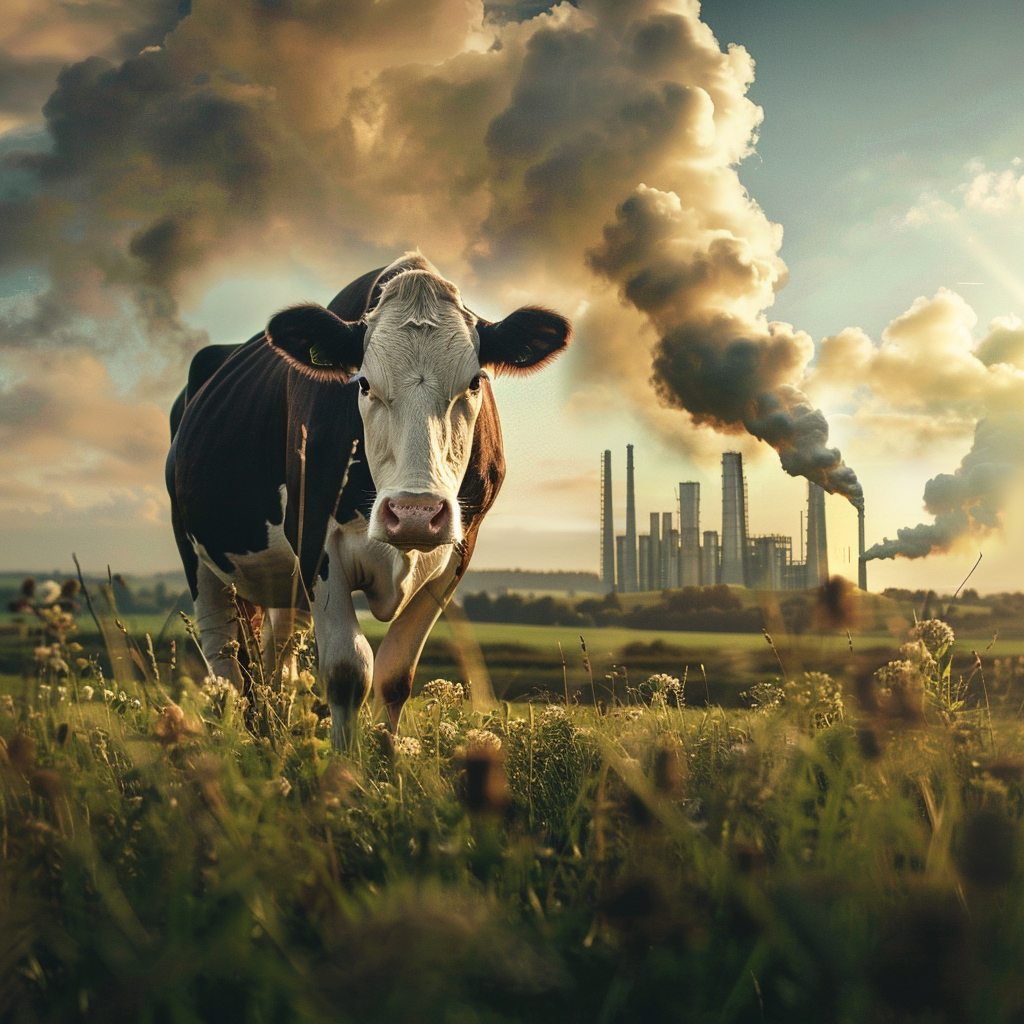
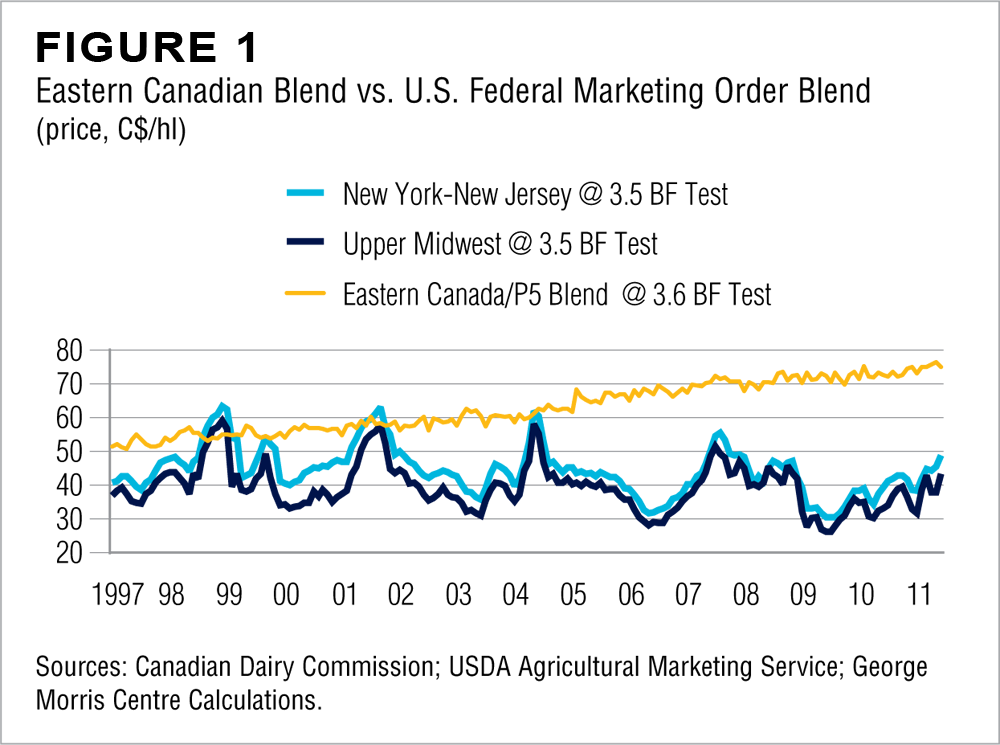

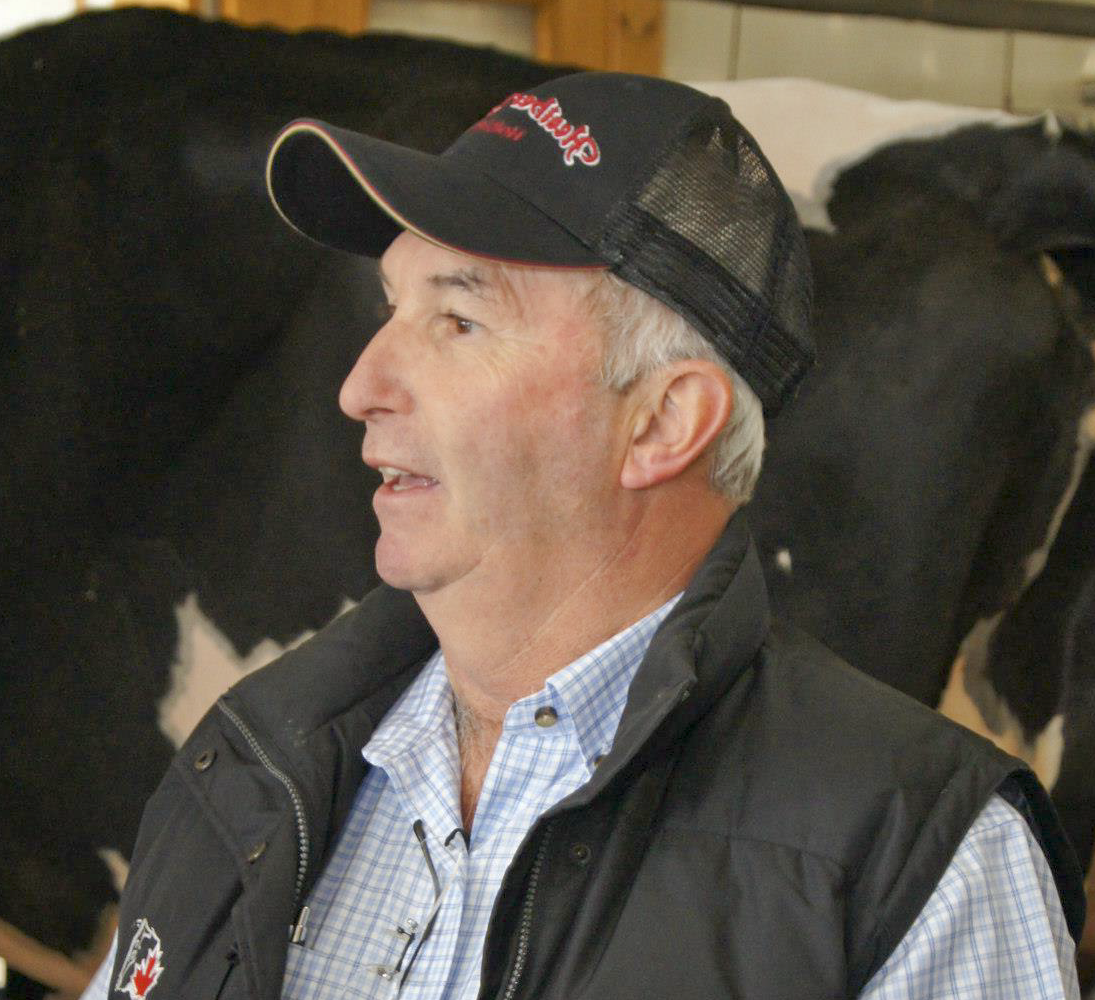 Glen has great respect for people in the barn and in the Board Room. It has served him well and been returned to him. He highlights his experiences while at the Holstein Canada Board table. “This enriching experience at the Board table has helped me develop an attitude of respect towards people and their opinions. People remember how you treat them and how you make them feel, longer than what you said. The most important ingredient of success is knowing how to get along with people.”
Glen has great respect for people in the barn and in the Board Room. It has served him well and been returned to him. He highlights his experiences while at the Holstein Canada Board table. “This enriching experience at the Board table has helped me develop an attitude of respect towards people and their opinions. People remember how you treat them and how you make them feel, longer than what you said. The most important ingredient of success is knowing how to get along with people.”